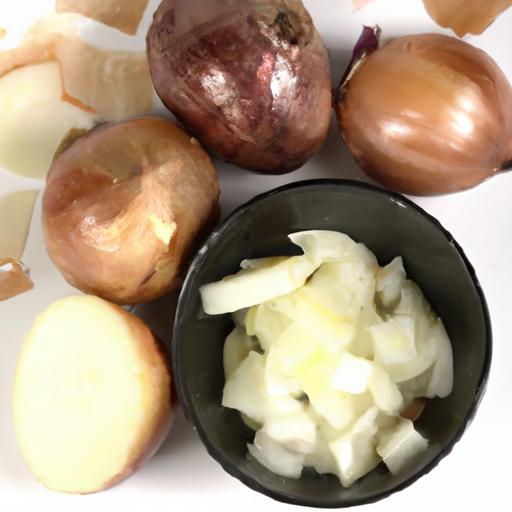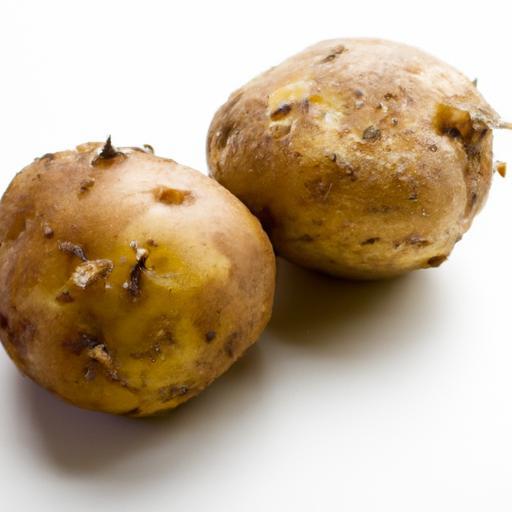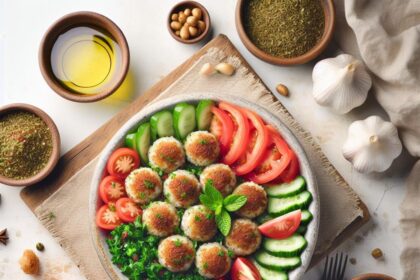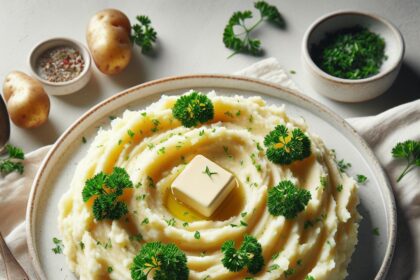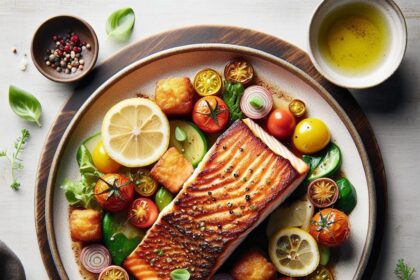In the bustling rhythm of kitchen life, potatoes and onions are the unsung heroes-versatile, hearty, and essential. Yet, all too often, these pantry staples fall victim to sprouting, spoilage, or that dreaded mushy patch long before their time. What if you could unlock the secret to keeping them fresh, flavorful, and ready for your next culinary creation-longer than you ever thought possible? Welcome to a smart guide on storing potatoes and onions, where science meets savvy storage solutions to preserve nature’s humble gems with ease and elegance. Say goodbye to waste and hello to freshness that lasts.
Keep Fresh Longer: Smart Ways to Store Potatoes & Onions
Potatoes and onions are kitchen staples that offer endless versatility but can quickly spoil when stored incorrectly. To keep fresh longer, understanding the ideal environment and avoiding common errors is essential. With the knowledge of innovative storage solutions and natural remedies, your pantry will stay stocked with crisp onions and firm potatoes, ready to elevate any meal.
Prep and Cook Time
- Prep Time: 10 minutes (for sorting and preparing storage)
- Cook Time: Not applicable (storage-focused)
Yield
- Suitable for storing up to 10 lbs of potatoes and onions per storage batch
Difficulty Level
- Easy
Ingredients
- 5 lbs potatoes (firm, unbruised)
- 5 lbs onions (dry-skinned, well cured)
- 1 cup newspaper or brown paper bags
- 1 mesh basket or breathable storage container
- 2-3 apple slices or a small container of activated charcoal (natural sprout inhibitor)
- Area with consistent cool temperature (45-50°F / 7-10°C)
- Dark, well-ventilated space (avoid direct sunlight)
Instructions
- Sort through your potatoes and onions, discarding any with bruises, cuts, or signs of spoilage. This prevents bad spots from affecting neighboring produce.
- Wrap individual potatoes in newspaper or place loose in a mesh basket to allow airflow. Avoid plastic bags because they trap moisture and accelerate deterioration.
- Store onions separately in a dry, breathable container with good air circulation to prevent mold. Never store onions near potatoes; the gases they emit can cause early sprouting.
- Maintain your storage area at a consistent, cool temperature between 45-50°F (7-10°C). A dark closet, pantry, or root cellar is ideal to protect from light and heat, which spur sprouting and spoilage.
- To inhibit sprouting, place a few slices of fresh apple among potatoes every few weeks. The natural ethylene gas inhibits buds from forming. Alternatively, activated charcoal absorbs moisture and odors, keeping produce fresh longer.
- Monitor your stash weekly for any signs of spoilage or sprouting and remove problematic items immediately to extend overall freshness.
Tips for Success
- Humidity is crucial: Potatoes require about 90-95% humidity to prevent shriveling, while onions prefer a drier environment (65-70%) to prevent mold. Use separate storage spots or containers to tailor conditions.
- If storing indoors, use a thermometer and hygrometer to monitor temperature and humidity accurately.
- Never refrigerate potatoes; cold temperatures (~40°F or below) convert starches to sugars, harming flavor and texture.
- For extended storage, consider weaving onions into braids for hanging in ventilated pantries, maximizing airflow and space.
- Try layering potatoes and onions in mesh bags hung in a cool, dry spot to combine airflow and space-efficiency.
Serving Suggestions
Freshly stored potatoes and onions lend themselves beautifully to countless dishes. Enjoy freshly peeled potatoes boiled or roasted with herbs, paired with caramelized onions to elevate your plate. Garnish with fresh chopped parsley, chives, or a drizzle of olive oil to highlight their natural flavors. For easy weeknight meals, incorporate your perfectly preserved produce into stews, soups, or crispy homemade fries.
| Nutrient | Potatoes (per 100g) | Onions (per 100g) |
|---|---|---|
| Calories | 77 kcal | 40 kcal |
| Protein | 2 g | 1.1 g |
| Carbohydrates | 17 g | 9 g |
| Fat | 0.1 g | 0.1 g |

For more expert tips on food storage, explore our Smart Food Storage Ideas and consult NDSU Extension on Potato Storage for detailed agricultural guidance.
Q&A
Q&A: Keep Fresh Longer – Smart Ways to Store Potatoes & Onions
Q1: Why do potatoes and onions need special storage?
A1: Potatoes and onions are natural foes when it comes to storage. Potatoes release moisture and gases that can cause onions to spoil quickly, while onions emit gases that encourage potatoes to sprout. To keep both fresh and tasty, it’s crucial to store them properly and separately.
Q2: What’s the ideal environment for storing potatoes?
A2: Potatoes prefer a cool, dark, and well-ventilated spot – think around 45-50°F (7-10°C). Avoid storing them in the refrigerator, as the cold turns their starch into sugar, messing with the flavor and texture. A paper bag, basket, or a perforated bin works wonders for airflow.
Q3: How should onions be stored to maximize freshness?
A3: Onions thrive in cool, dry, and airy places. A temperature of about 40-50°F (4-10°C) is perfect. They love darkness, too; light can make them sprout. Use mesh bags or hang them in braids to keep air circulating and avoid moisture buildup that leads to mold.
Q4: Can potatoes and onions be stored together to save space?
A4: It’s a no-go! Storing them side by side accelerates spoilage. Keep them separate to extend their shelf life – potatoes in a dark pantry corner, onions hanging freely in a cool spot nearby.
Q5: Are there any nifty tricks to prolong their shelf life even further?
A5: Absolutely! For potatoes, remove any with green spots or sprouts – they can spoil the batch. Wrapping them loosely in newspaper can help absorb moisture. For onions, keep them away from plastic bags; too much moisture causes rot. Also, check your stock regularly and remove any soft or shriveled items.
Q6: What about sweet potatoes? Do they require the same storage conditions?
A6: Sweet potatoes like it a bit warmer-around 55-60°F (13-16°C)-and also prefer darkness and good ventilation. Too cold, and they can develop hard spots; too humid, and mold becomes an unwelcome guest.
Q7: Can storing potatoes or onions near other fruits or vegetables cause problems?
A7: Yes! Fruits like apples and bananas release ethylene gas, which speeds up sprouting and spoilage in potatoes and onions. Keep your root veggies apart from ethylene producers for longer-lasting freshness.
Q8: What about freezing potatoes or onions-does that work?
A8: Raw potatoes don’t freeze well; they become mushy and grainy. Cooked potatoes freeze better. Onions can be chopped and frozen, which is convenient for cooking, but they lose their crisp texture.
With these smart storage tips, your potatoes and onions will stay fresh, flavorful, and ready to power up your meals for weeks to come!
Insights and Conclusions
By embracing these smart storage strategies, you can extend the life of your potatoes and onions, keeping them fresh and flavorful for weeks on end. Whether it’s cool, dark corners, breathable containers, or thoughtful separation, these simple yet effective tips transform everyday pantry staples into long-lasting kitchen heroes. So go ahead-store smarter, waste less, and enjoy the full potential of your potatoes and onions in every meal. Your future self (and taste buds) will thank you!